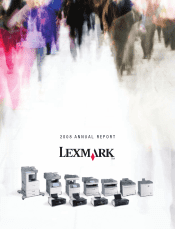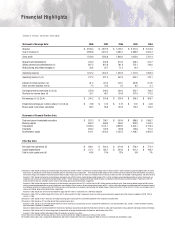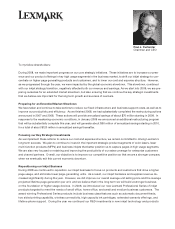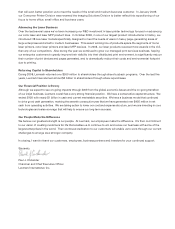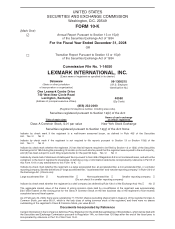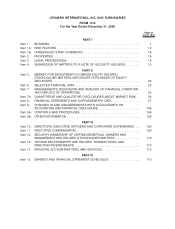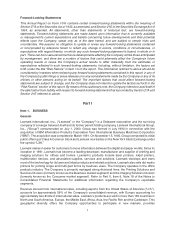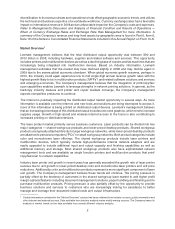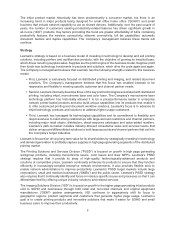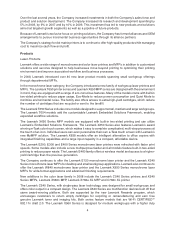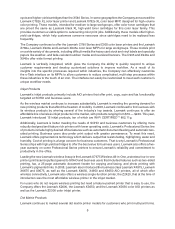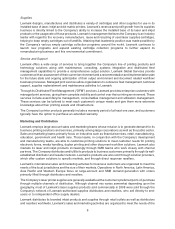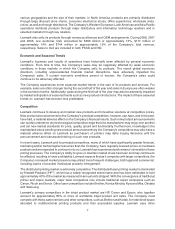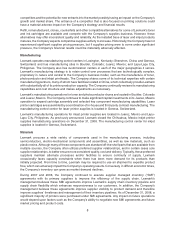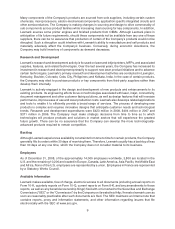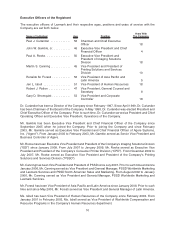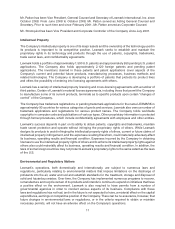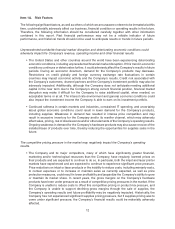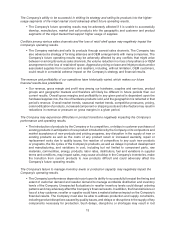Lexmark 2008 Annual Report Download - page 9
Download and view the complete annual report
Please find page 9 of the 2008 Lexmark annual report below. You can navigate through the pages in the report by either clicking on the pages listed below, or by using the keyword search tool below to find specific information within the annual report.The inkjet product market historically has been predominantly a consumer market, but there is an
increasing trend in inkjet products being designed for small office home office (“SOHO”) and small
business that include network capability to act as shared devices. Additionally, over the past couple of
years, the number of customers seeking productivity-related features has driven significant growth in
all-in-one (“AIO”) products. Key factors promoting this trend are greater affordability of AIOs containing
productivity features like wireless connectivity, ethernet connectivity, full fax capabilities, automatic
document feeders and duplex capabilities. The Company’s management believes these trends will
continue.
Strategy
Lexmark’s strategy is based on a business model of investing in technology to develop and sell printing
solutions, including printers and multifunction products, with the objective of growing its installed base,
which drives recurring supplies sales. Supplies are the profit engine of the business model. Supplies profit
then funds new technology investments in products and solutions, which drive the cycle again and again.
The Company’s management believes that Lexmark has the following strengths related to this business
model:
• First, Lexmark is exclusively focused on distributed printing and imaging, and related document
solutions. The Company’s management believes that this focus has enabled Lexmark to be
responsive and flexible in meeting specific customer and channel partner needs.
• Second, Lexmark internally develops three of the key print technologies associated with distributed
printing, including inkjet, monochrome laser and color laser. The Company’s monochrome laser
technology platform has historically allowed it to be a price/performance leader in enterprise
network printer-based products and also build unique capabilities into its products that enable it
to offer customized printing and document workflow solutions. Lexmark’s focus is to advance its
inkjet technology, products and solutions to address higher usage customers.
• Third, Lexmark has leveraged its technological capabilities and its commitment to flexibility and
responsiveness to build strong relationships with large-account customers and channel partners,
including major retail chains, distributors, direct-response catalogers and value-added resellers.
Lexmark’s path-to-market includes industry-focused consultative sales and services teams that
deliver unique and differentiated solutions to both large accounts and channel partners that sell into
the Company’s target industries.
Lexmark is focused on driving long-term value for its shareholders by strategically investing in technology
and demand generation to profitably capture supplies in high page generating segments of the distributed
printing market.
The Printing Solutions and Services Division (“PSSD”) is focused on growth in high page generating
workgroup products, including monochrome lasers, color lasers and laser MFPs. Lexmark’s PSSD
strategy requires that it provide its array of high-quality, technologically-advanced products and
solutions at competitive prices. Lexmark continually enhances its products to ensure that they function
efficiently in increasingly-complex enterprise network environments. It also provides flexible tools to
enable network administrators to improve productivity. Lexmark’s PSSD target markets include large
corporations, small and medium businesses (“SMBs”) and the public sector. Lexmark’s PSSD strategy
also requires that it continually identify and focus on industry-specific issues and processes so that it can
differentiate itself by offering unique industry solutions and related services.
The Imaging Solutions Division (“ISD”) is focused on growth in the higher page generating inkjet products
sold to SOHO and businesses through both retail and non-retail channels and original equipment
manufacturer (“OEM”) partner arrangements. ISD continues to aggressively shift its focus to
geographic regions, product segments and customers that generate higher page usage. Lexmark’s
goal is to create printing products and innovative solutions that make it easier for SOHO and small
business users to improve their productivity.
3

